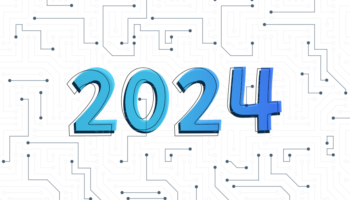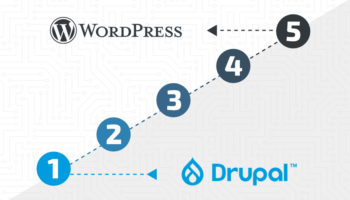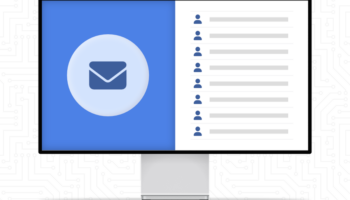The primary purpose of any marketing funnel is to turn leads into customers and customers into repeat buyers, but it’s up to you to build a marketing strategy that will make that happen. An effective strategy should identify which content works best at each stage of the funnel. Here’s how to create a complete content marketing funnel that will get you maximum results with minimum effort.
Understanding the Marketing Funnel and Buyer’s Journey
Understanding how your customers buy your product or service is central to developing a successful content marketing strategy. The first step in building a great content marketing funnel is creating buyer personas for your ideal customers. Buyer personas are characteristics of potential customers, based on research about their common attributes and behaviors. Knowing who these people are, what they’re thinking, and where they consume content as they go through their buying process will help you tailor your content strategy to speak directly to them when they’re ready for it.
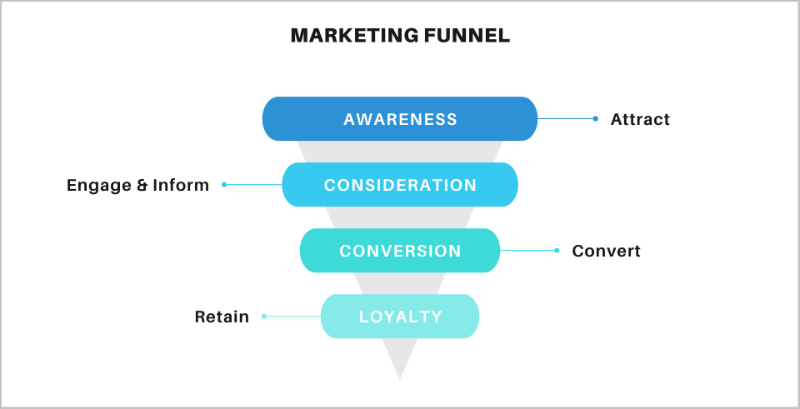
The marketing funnel is an easy way of thinking about how your ideal customer moves through your sales process. It’s made up of four stages: awareness, consideration, conversion, and loyalty. For example, if you’re selling cameras, your awareness stage might be when someone sees an ad on Facebook. Your consideration stage might be when they visit your online store and start looking at prices, features, and models. Your content efforts should be mapped across each stage of that marketing funnel, so you’re introducing your potential customers to your brand in an effective way.
Content for Each Stage of the Funnel
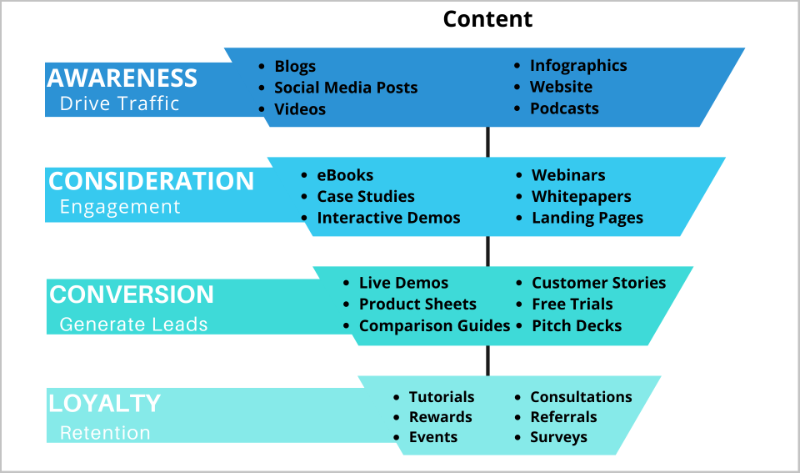
Awareness
The awareness stage of the marketing funnel should include content that attracts consumers. Gain consumer attention with blogs, videos, infographics, or other content that shows how to solve a problem, get an answer, or meet a need. You should assume that people are unaware of your company and the solutions you provide, so be sure content at this stage points to a problem.
Consideration
After you have gained your audience’s attention and provided them with a problem to be solved, they will be looking for a solution. This stage of the funnel is where you need to educate and demonstrate why your prospect should be using your product or services. Case studies, white papers, and eBooks are just a few content types that can be utilized. This content shouldn’t push customers to buy, rather it should clarify your offering’s purpose. This will help narrow down ideal prospects and exclude people from your funnel that aren’t a good fit, aiding in healthy customer retention.
Conversion
Once potential customers have reached the conversion stage of the marketing funnel, it’s important to provide clear reasons why your product or service is the right choice for them. Content such as free trial offers, live demos, and competitor comparison guides help convince those at the bottom of the funnel to complete a purchase.
Loyalty
This last stage sometimes gets forgotten but is just as important as the rest. It’s vital to keep your customers engaged and cultivate a relationship beyond the sale. This can lead to higher customer lifetime value as well as added reach through word of mouth and referrals. Content that makes your service easier to use like tutorials, or special offers like rewards programs will keep them coming back for more.
Creativity is key when it comes to crafting content for each stage of the marketing funnel. You won’t know what will work best unless you try. For more help optimizing your marketing funnel, contact our expert content creators at Hall.

